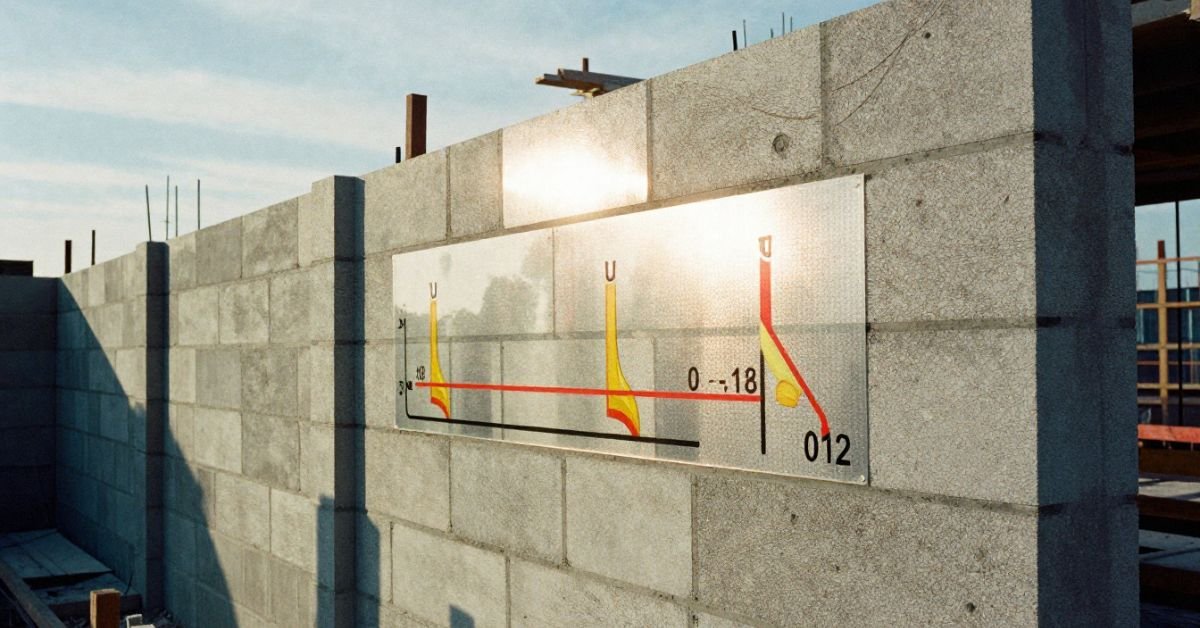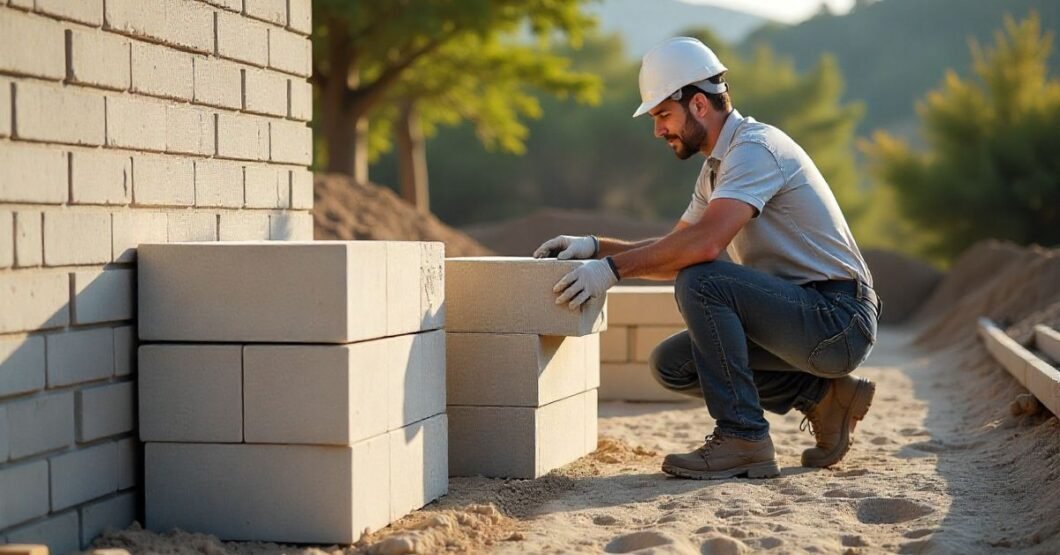Introduction
Beton celular autoclavizat, also referred to as AAC on the global front, is a construction material that has gained wide acceptance in the contemporary sustainable construction market due to its environmentally friendly, cost-effective, and durable application in building construction.
This cutting-edge material boasts impeccable thermal insulation, fire ratings, and strength, making this a must-use material for all residential and commercial developers in 2025.
This guide includes helpful information about BCA, including how it is constructed, where it will bring about the most value, and what challenges are involved concerning BCA in architecture, as well as in construction developments and contracts, and for homeowners who may wish to invest in energy-efficient materials.
We will draw parallels to the more traditional materials, such as brick and poured concrete, describe the environmental considerations, and provide current market and performance statistics.
What Is Beton Celular Autoclavizat?
Beton celular autoclavizat (BCA) is a precast, very lightweight foam concrete building material, developed more than one hundred years ago, but it underwent massive improvements in more modern times.
It is manufactured out of natural raw materials and with the use of the pressurized atmosphere known as an autoclave that makes it highly durable and very versatile alongside energy efficiency.
Key Ingredients:
- Fine or fly ash
- Cement
- Lime
- Water
- Aluminum powder (aeration)
Such mixtures are poured into slurry, shaped into forms and then inflated with aluminum that generates gas in the mixtures. They are then cured and cut into blocks or panels, and lastly steam-cured under pressure, in an autoclave.
How Beton celular autoclavizat Is Manufactured: Process & Components
The process of manufacturing Beton celular autoclavizat is a very exact chemical process supported by automation to guarantee robustness, lightweightness, and proficiency.
Manufacturing Steps:
- Mixing: The base layer is mixed with sand, lime, cement, and water and mixed.
- Casting the Molds: This mixture causes the formation of foam and release of the gaseous form of hydrogen.
- Pre-curing: The slurry is allowed to partially set into a solid semifirm green cake.
- Cutting: There are automatic cutters that cut the mass into blocks/panels of different sizes.
- Autoclaving: The stability of blocks is enhanced by autoclaving them at 180-200°C.
- Packaging: Completed products are cooled, stacked, and dispatched to supply.
Visual Snapshot:
| Stage | Description | Duration |
| Mixing | Raw material preparation | 30–45 mins |
| Curing | Autoclaving at high heat | 10–12 hours |
| Post-process | Cooling, sorting | 1–2 hours |
This is done to guarantee dimensional stability, closed-cell porosity, and high compressive strength in spite of its light weight.
Properties and Benefits of Autoclaved Aerated Concrete
AAC has become popular because of its combination of properties.
Major Advantages:
- Lightweight: As light as 3 times less than concrete
- Outstanding thermal insulation: U-values to 0.12 W/m²K
- Fire-resistant: Tolerates temperatures in excess of 1,200°C
- It is easy to cut and mould: Ability to cut, saw and groove on-site is attained.
- Noise Reduction: 40 dB noise insulation
- Mold resistant
Performance Chart:
| Property | BCA Value | Traditional Brick |
| Density (kg/m³) | 500–700 | 1,800 |
| Compressive Strength (MPa) | 3–5 | 5–25 |
| Fire Rating | 4 hours + | 1–2 hours |
| Thermal Conductivity | 0.12–0.16 W/m²K | 0.6–0.8 W/m²K |
CA offers a great efficiency-to-cost ratio, lessening the structural and heating loads.
BCA vs Traditional Concrete and Brick
Autoclaved cellular concrete is often much better than conventional materials when it comes to sustainability and energy consumption.
Side-by-Side Comparison:
| Feature | BCA | Brick/Concrete |
| Weight | Very light | Heavy |
| Ease of Installation | Quick, reduced mortar | Labour-intensive |
| Insulation | Built-in | Needs insulation layer |
| Customization | Saw-cuttable | Limited |
| Environmental Impact | Low CO2 footprint | High CO2 in cement |
Although BCA has a slight weakness in ultra-high load-bearing walls, the composite solutions that incorporate steel and insulation panels counter these shortcomings.
Energy Efficiency and Thermal Performance

Energy conservation laws in Europe and the world over are a priority area of thermal efficiency. CA blocks naturally inhibit the transfer of heat, so there is no need to add any extra insulation in most situations.
Thermal Properties CA:
- Coefficient (lambda): 0.12-0.16 W/mK
- The Beton celular autoclavizat blocks used in wall systems can achieve U-values of 0.18-0.22 W/m²K without additional insulation.
This boosts compliance with NZEB (Nearly Zero- Energy Building).
Related Benefit:
- Reduced HVAC loads = reduced operational energy consumed
- Diffusion-induced natural airflow = better indoor air quality
Structural and Seismic Performance of Beton celular autoclavizat
BCA is not as structurally sound as reinforced concrete, but it works well in buildings of up to 3-4 stories provided it is used with reinforced supports. It is lightweight and therefore minimizes the overall seismic force and minimizes the risk during earthquakes.
Best Practices:
- Retrofit Beton celular autoclavizat blocks with RC columns and lintels.
- Use load-bearing BCA panels as a partition wall or infill structure.
Seismic Performance Statistic:
Experiments demonstrate that BCA-based wall systems have the ability to absorb 30-40 percent more seismic energy compared with brick systems of equal weight.
Applications in Residential and Commercial Buildings
CA is appropriate to:
- Single-family homes
- Residential multi-family buildings (up to medium-rise)
- Malls and warehouses
- Schools and health institutions
- Buildings of passive house (Passivhaus) standard
Architectural Flexibility:
- Precast beams and slabs
- Rounded and arched brickwork simulation
- Compatibility with gypsum plaster, cement render, and tiling
It can also be constructed much faster, in many cases in 20-25 percent less time than a brick system.
Environmental Impact and Sustainability
CA will also mark a change in construction toward net-zero and recyclable materials. Its ecological advantages extend from production through to end-of-life reuse.
Eco Features:
- Produced with by-products of industry (e.g., fly ash)
- 100 percent recyclable (crushed and used as insulation fill)
- Does not need as much raw material as the traditional block making
- Wastes generated are nontoxic.
| Factor | BCA | Regular Concrete |
| CO₂ Emissions (kg/ton) | ~180 | ~300–400 |
| Water Usage | Low | Medium–High |
| End-of-Life Reusability | 100% | Limited |
BCA is also more likely to be compliant with future standards since the EU Green Deal policies come into force in 2025.
Limitations and Challenges of BCA
No material is perfect. Despite the numerous advantages of BCA, like any other innovation, it has certain flaws that construction teams must take into account.
Potential Disadvantages:
- Less bending strength than concrete must be handled when transporting.
- Moist, and this is not well sealed.
- Will crumble when a person is aggressive or points.
- Storage needs will be indoor or covered to be kept dry.
Workarounds:
- Apply coating or rendering on exposed walls using waterproofing.
- High-impact use is not to be reinforced by industry.
- Educate and train men on how to be careful about BCA.
All these limitations are roadblocks and not deal-breakers when used well.
Cost Analysis and ROI in 2025
Though the initial material costs of BCA are a little more than conventional brick, ROI becomes obvious when considering:
- Less working time
- Less insulation required
- Fewer structural supports as a result of lightness
- Reduced cost of shipping and scaffolding
Cost Efficiency Table (Per 1 m³ Wall Assembly):
| Component | Brick (€) | AAC (€) |
| Material Cost | 45 | 55 |
| Mortar/Adhesive | 12 | 6 |
| Labor | 38 | 22 |
| Total Wall Savings | — | ~15–20% |
On a typical 130 m² house, savings of 4,000–6,000 (energy + labor) can be realized in the first 5 years.
Installation Tips and Best Practices
Although BCA is friendly to the builder, there is optimum performance on the ground through best practice.
Do’s:
- Clean joints should be used with thin-bed mortar.
- Use anti-moisture plaster or anti-moisture primer in wet places.
- Multi-story projects should be reinforced with steel or a mesh that is strong.
- Seal the doors and windows totally to avoid thermal bridging.
Don’ts:
- Do not install where there is water exposure on the constant side.
- Do not use old mortar made of cement that is very cumbersome and not so productive.
- Do not omit the time of curing when using plaster/render.
Proper installation makes them last several decades and is insulating.
Future Trends and Innovations in BCA Technology
The international demand of AAC is expected to grow 6-8 percent per year because of low-carbon building projects and affordable housing projects.
Innovations:
- Sound-insulated foamed BCA panels
- BCA blocks printed in 3D (research study)
- BCA housing unit modules
- The use of AI to increase accuracy and reduce wastage in industrial plants
With the incentivization of sustainable building practices by governments, the number of developers shifting towards BCA is likely to increase.
FAQs
Can BCA be used in load-bearing walls?
In the low-rise and mid-rise constructed structures that are reinforced, yes.
What makes BCA different from regular concrete?
It is lighter, insulating, and cured under pressure, instead of the standard poured concrete.
Is BCA applicable in cold weather?
Definitely, BCA is excellent in the insulation of homes during cold and hot weather.
Is BCA fire resistant?
It is even fire resistant for up to 4 hours and can withstand temperatures of more than 1,200°C.
How long can a BCA construction last?
When constructed properly, more than 60-70 years with minimum care.
Conclusion
Gone are the days when autoclaved cellular concrete remained a niche product, it is a modern construction need. The broadening benefits that come in the form of energy efficiency and acoustic comfort, environmental compliance, and cost reduction in virtually any building project in 2025.
BCA offers a great solution to architects, civil engineers, builders, and property owners who want to find a sustainable and efficient solution that is future-ready.




